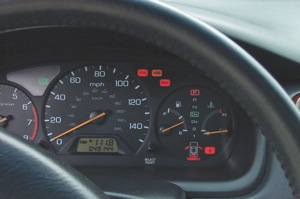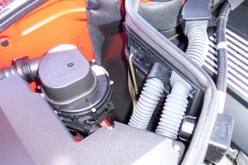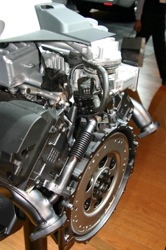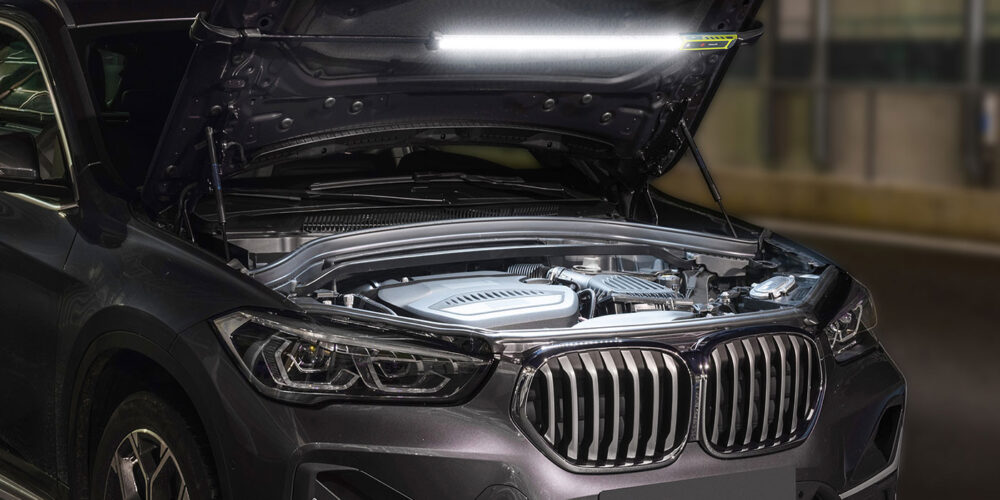 Do you remember a time when we didn’t have a malfunction indicator light on the dash? If you do, then you would also remember the thick, heavy smog of California’s valley cities and the stench from an exhaust pipe while sitting at a traffic light. Technology and the family vehicle have come a long way from the days of belching high amounts of NOx, CO and HC out of the tailpipes.
Do you remember a time when we didn’t have a malfunction indicator light on the dash? If you do, then you would also remember the thick, heavy smog of California’s valley cities and the stench from an exhaust pipe while sitting at a traffic light. Technology and the family vehicle have come a long way from the days of belching high amounts of NOx, CO and HC out of the tailpipes.
Back in 1982, the California Air Resources Board (ARB) began a course of action that forever would change the automotive industry. It developed regulations that would require all vehicles sold in their state to have an on-board diagnostic system (OBD I) to detect emission failures. It could monitor O2 values, EGR and basic engine functions, but not much else. It was pretty good at telling you that an O2 sensor had failed, but couldn’t monitor the condition of the catalytic converter.
By 1996, all manufacturers updated their emission control systems to the OBD II system. (There were some small exceptions, but all those exceptions were met by 1999.) Now, with more O2 sensors (front and back of the converter) and even more information coming from the air input, engine conditions and load changes, a more precise, detailed monitoring could take place.
OBD II brought a lot of changes regarding how a technician diagnoses a vehicle. With OBD I, a failure had to occur in order to produce a service code, while OBD II can monitor failures or even partial failures. These days, codes have become part of the normal process in determining a fault. There are several different types of codes. Beyond engine, transmission, HVAC or body codes, there’s also a way to break down the priority of some of those codes.
For instance, an “A” rated code is a code that will trigger the Malfunction Indicator Light (MIL) with only one occurrence or failure. The OBD II system will also store it as a history code, failure record and/or freeze-frame data to aide the technician in diagnosing the problem.
A “B” code is a less serious emission code and usually will occur at least once on two consecutive drive cycles before the MIL will come on. If a failure occurs on the first trip, but not on the next trip, the MIL will remain off. However, once it does fail twice, it’s stored just like an “A” code would be.
There are even lower priority “C” and “D” codes. Even though these codes may not directly involve the engine, all codes (in the general term of “codes”) are related to the emission status in some way or another.
If you’re not sure which is a low-priority code and which is a high-priority code, try disconnecting a sensor with the engine running. If the service light doesn’t come on right away, there’s a good chance it’s not a high-priority sensor.

DRIVE CYCLES
In order to understand the priority of a code, we also will need to define a drive cycle. A drive cycle (or trip) consists of a complete warm-up from cold with the vehicle driven for a length of time that allows the coolant temperature to rise by at least 40° F. (Note: a startup has to be less than 160° F in order to start a drive cycle.). An example of a drive cycle would be a cold-started engine (for example, where the coolant temp is below 122° F and the air temp and coolant temp are within 10 degrees of each other). The key can’t be on prior to a drive cycle because the O2 heater circuits would most likely be heating up and the results from the sensor diagnostics may not run. The fuel tank also has to be above a half tank, preferably three-quarters full.
Note: Outside temperature and other conditions also have to be met. This varies from manufacturer to manufacturer.
• Start the engine and allow it to idle for about two to three minutes with the A/C on. (The PCM will start to run its internal diagnostic checks on the O2 heater circuits, air pump and EVAP purge valve.)
• Now it’s time for a drive. Bring the vehicle up to 55 mph at a nice, steady (not jerky) throttle. (The PCM will now check for misfires, fuel trim data and canister purge.)
• Hold steady at 55 mph for about three minutes. (Now the PCM checks EGR, air pump, O2 sensors and canister purge.)
• Let off the throttle and coast down to around 20 mph without using the brakes or depressing the clutch. (Now the PCM will make its final checks on the EGR and canister purge systems.)
Note: Newer systems do not need a drive cycle to run some of the internal diagnostics. Evaporator system checks on some vehicles are capable of running their self-diagnostic tests right in a person’s garage without them even being near it or having the key on.
WHAT’S IN A CODE?
Keep in mind the purpose of all these codes is to inform the driver of the emissions that are being expelled from the tailpipe. Anytime the hydrocarbons (HC), carbon monoxides (CO), oxides of nitrogen (NOx) or evaporative emissions exceed 1.5 times the federal test procedure (FTP), the MIL will illuminate. The drive cycles are how the PCM can determine the conditions. But, as we all know, there are a lot of consumers out there who ignore those little lights on the dash until it’s too late. Or, in many cases, the light isn’t on their list of immediate concerns or it disappears.
Here’s a code (similar to most all codes) that might explain things better.
P0401 — Insufficient EGR flow
– The control module turns OFF the MIL after three consecutive ignition cycles that the diagnostic runs and does not fail.
– A current DTC (last test failed) clears when the diagnostic runs and passes.
– A history DTC clears after 40 consecutive warm-up cycles, if this or any other emission-related diagnostic reports no other failures.
– The DTC can be cleared with a scanner or by removing the battery feed voltage from the PCM.

THE INSTRUMENT PANEL
How many times have you had a customer call you and tell you that the light was on, but now it’s off? Chances are (if it didn’t go into history) that it met the criteria of the three consecutive drive cycles. However, that doesn’t necessarily clear it from history, and if you had a real frugal customer you could tell them, “Oh, just drive the car around 40 times without any failures and the code will clear itself from history, as well.” But, that might get you a few strange looks at the service counter.
Removing the battery source from the PCM brings up even more issues. That can bring on a “re-learn” for the computer, and it might involve a drive cycle to stabilize the idle or shift patterns. Using a scanner to clear the codes is still a better way for the tech and the owner.
The point here is not necessarily detailing the procedures or the changes that you’ll find in how each manufacturer sets up its particular internal tests and diagnostics. This is just one example of how it’s done (but most are similar). If nothing else, at least you’ll have a reference to explain to your customer the reasoning behind key cycles, drive cycles and why a service light may go off one day and not the next. Hopefully, by increasing their awareness of what today’s cars are doing and how all these emission codes relate, it will contribute to the quality of their life and yours, as well.









